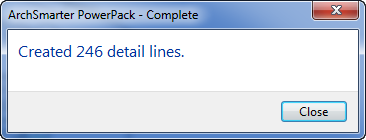Smart-Pack for Revit – Power Convert
Power Convert reads the layers of the selected DWG file and converts the elements on each layer to the specified Revit line style. Using the tool is a four-step process:
- Select the Revit line type. You can convert the DWG to Revit detail lines, model lines, area boundaries, room separation lines or space separation lines.
- Select the DWG file you want to convert. You can select imported or linked files. Once you select the DWG file, the dialog will list the file’s layers. Only layers containing elements will be shown.
- For each layer, specify the Revit line style to which you wish to convert it. If you do not want to convert a particular layer, simply leave that layer blank. The macro will skip over all layers that are not assigned a line style.
- Click the OK button to convert the DWG.

If you are converting similar DWG files, save the layer and line style settings by clicking the “Save” button in the lower left-hand corner. This saves the layer settings to a text file. To load a layer setting file, click the “Load” button and browse to the file.
Once the macro completes the conversion, it will display a dialog box indicating how many Revit lines were created.

NOTE: Power Convert does not convert DWG text to Revit text. The Revit API cannot read DWG text. You will need to add your text and dimensions manually in Revit.
Similarly, the tool will convert leaders and dimension strings but not the text associated with those elements. Hatch patterns in the DWG file will be converted to Revit lines, not fill patterns.

